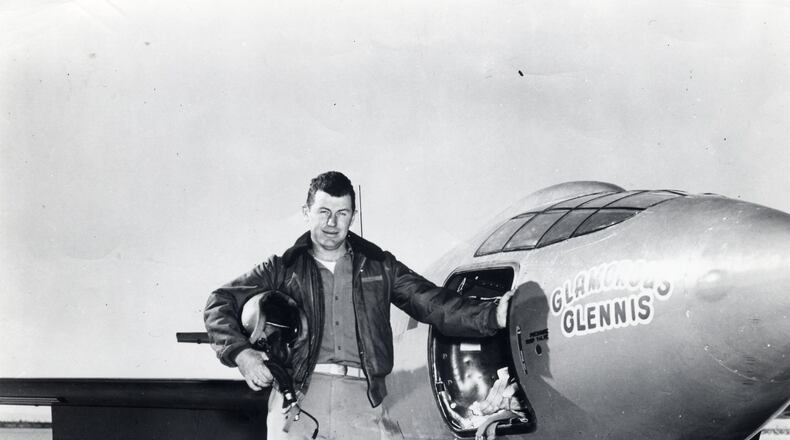RELATED: Stealth bombers, test pilots, UFO rumors among Wright-Patterson’s past 100 years
Yeager’s flight “was one of the milestone events in the history of aviation,” said Bob van der Linden, curator of special purpose aircraft, including the X-1 today on display at the National Air and Space Museum in Washington, D.C. “It proved that the so-called sound barrier was no barrier whatsoever.”
Wright Field was a crucial center of research and development that paved the way for supersonic flight, and was where Yeager flew military planes before moving to California, said Doug Lantry, historian at the National Museum of the U.S. Air Force at Wright-Patterson Air Force Base.
“In the case of the X-1, the people at Wright Field really were the ones who defined what the problems were that needed to be studied and how to approach those studies,” Lantry said. “…. Wright Field was sort of the nerve center … of approaching this problem and how to solve it.”
RELATED: McCook Field had large influence on U.S. aviation history
The military partnered with Bell Aircraft Corp. and the National Advisory Committee on Aeronautics – forerunner of NASA – to push the frontier of high-speed flight.
Yeager was chosen to become a test pilot while flying aircraft at Wright Field after World War II.
“He got to fly almost every type of fighter airplane there was and his abilities as a pilot got him noticed,” Lantry said.
Back at Wright Field, engineer Ezra Kotcher was a leading advocate to build a bullet-shaped, rocket-engine powered plane with thin wings to break the sound barrier, Lantry said.
Engineers determined an aircraft shaped like a .50-caliber bullet could survive the phenomenon of shockwaves piling up on an airplane as it attempts to exceed the speed of sound.
Even so, aviation researchers had little to no data on the phenomenon of “compressibility” at transonic speeds near Mach 1, or the speed of sound, van der Linden said.
RELATED: Little Green Men From UFOs? POW mural at Wright-Patt a mystery
“A lot of aircraft were encountering all sorts of difficulty,” he said. “They were approaching the speed of sound with compressibility (a problem). Aircraft would lose control, actually some were breaking up, and some people thought it was not possible to go faster than supersonic speed.”
Yeager encountered buffeting in the X-1 just before the threshold of crossing the sound barrier before the historic flight, van der Linden said. Engineers installed a device on the experimental plane’s tail elevator to more finely control and stabilize the airflow over the plane, and the problem was resolved with Yeager at the controls, he said.
On the day of the record-breaking flight that took off from what is today Edwards Air Force Base, the bright orange X-1 was cradled under a B-29 Superfortress bomber and dropped over the Mojave desert. Yeager piloted the X-1 to Mach 1.06, or 700 miles per hour at 43,000 feet.
RELATED: Wright-Patt reaches a century of innovation
Yeager broke the sound barrier for his last time at age 74 on the 50th anniversary of the flight flying an F-15 Eagle over Edwards.
The Air Force museum has the flight suit Yeager wore that day in storage, and an XLR11 rocket engine on display just like the one that powered the X-1. The Bell X-1B, a longer, similar version of the original X-1, is in the museum’s Research and Development Gallery.
About the Author
